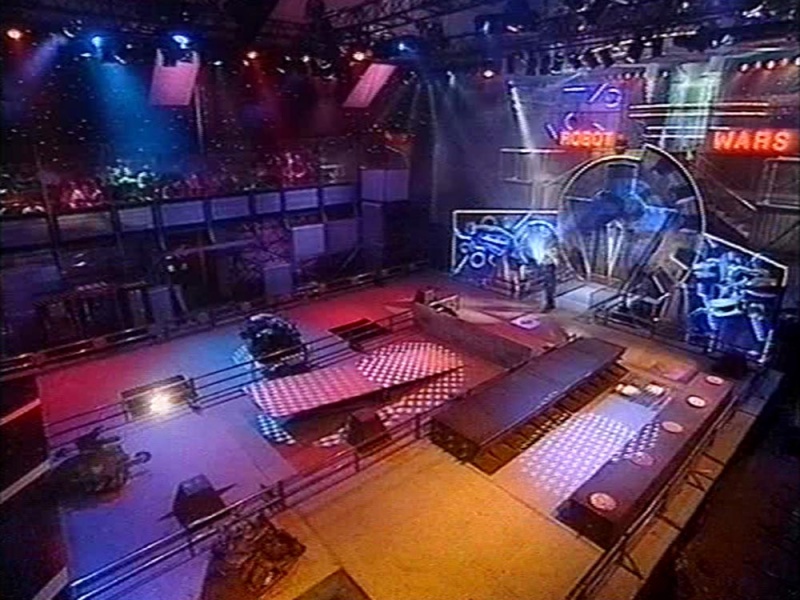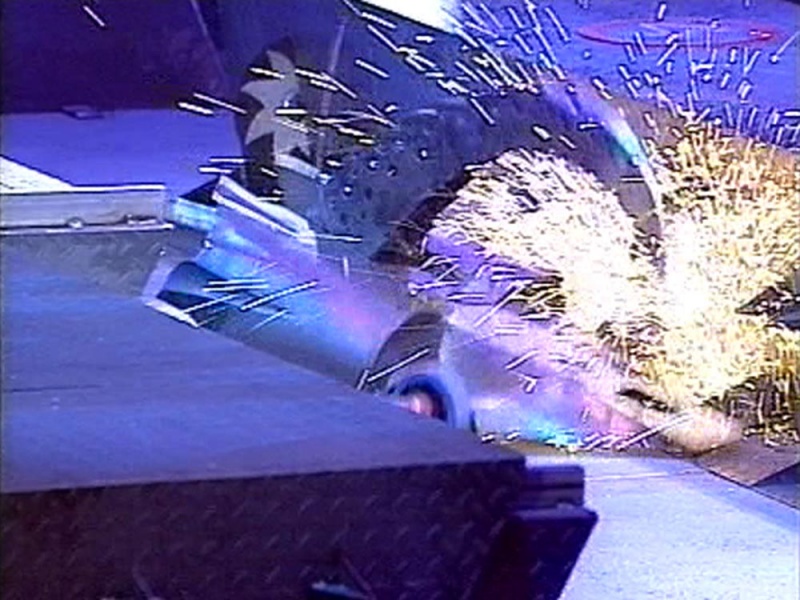Robot Wars Reactivated on Challenge
Originally published on my personal blog on the 21st of March 2014.
This time last month, nostalgic geeks were celebrating 16 years since the first episode of Robot Wars was broadcast on BBC Two. Today, game show channel Challenge announced they had acquired the rights to the second series of the show. For me, the news prompted childlike glee – especially because in my view they've picked up the best series in the history of the show.

I have a theory that states the second series of any long-running television programme is usually the best. The first series acts like an extended pilot, as the show finds its feet on a shoestring budget. After a couple of series, the show is established – but producers fear looking complacent and begin to fiddle with the formula. This leaves the second series as the recipe with the weakest ingredients removed, and no extras added for the sake of it.
Robot Wars is a clear cut example of this theory. Series 1 introduced:
- The house robots, built by the BBC to preside over action in the arena
- Pits reporter Philippa Forrester and fast-talking commentator Jonathan Pearce
- The gauntlet round, where competitors chose one of three treacherous routes to try and cross the arena
- The trials round, which tested the robots' manoeuvrability and strength
- The panel of judges who decided the results of close fights
- The glorious notion of robots fighting as entertainment!
But a lot of things weren't quite right. Original presenter Jeremy Clarkson was a little too sarcastic and scathing. There was a lack of competitors, with just 33 robots finished in time for filming. (Two of the judges and one of the crew built sacrificial machines just to boost the numbers to the necessary 36!) This meant that robots of different weight classes competed on an equal playing field. Machines ranged from a gargantuan 117 kg down to less than 3 kg! Plus, with just six episodes, there was no real tournament structure. Instead, a hasty six-way melee between the heat winners decided the overall champion.
Still, the first series was a runaway success. Roadblock won the battle that decided the series champion, and Robot Wars won the ratings battle with TFI Friday. TV execs couldn't get enough, ordering a second series of 15 regular episodes plus three one-off specials. And to paraphrase my theory from above, the producers kept the best bits – the house robots, the heat structure, Philippa, etc. – but lost the weak links – Clarkson, the weight class issues, the poor tournament structure – to make a stronger version of the same show.
Universities and hobbyists the length and breadth of Britain assembled robots to take part. Series 2 introduced us to future stars of the series: Panic Attack, Razer and Behemoth to name but three. Plus, we saw the early efforts of roboteers who went on to assemble three-time finalist Firestorm, four-times semi-finalist Wild Thing, and two-times champion Chaos 2. And the other competitors? Most were well-constructed and reliable, but retained a sense of scrapheap engineering. Fathers and grandfathers scoffed “I could do that!” and toddled off to the garden shed. I'd love to know the impact Robot Wars had on sales of arc welders and pillar drills.

The second series of Robot Wars was even more successful than the first, peaking at 6.94 million viewers for the grand final. And so, as if to prove my theory correct, the powers that be took its winning formula and started to muck around. They dropped the gauntlet and trials rounds, detracting from the variety of the show in favour of all out combat. This was the first of many changes which culminated in Robot Wars being less like family entertainment and more like WWE.
It also coincided with the Swiss Family Robinson feel of the show beginning to ebb away. It's a good thing that robots were stronger in the third series. In particular, it's great that competitors followed Cassius' example and added self-righting mechanisms. This meant fewer matches ended by a single, simple flip. But still, raising the bar made it harder to feel you could build a robot yourself. In later series, robots built in schools and sheds all but completely vanished. Advanced machines from engineering firms and military academies took their place. What's more, the house robots ceased to be loveable rogues and instead became oversized brutes. Whereas before happening upon a house robot by mistake would cause a scratch or a scar, it now meant significant damage and probable incapacitation. The spectacle was greater, but the series was weaker for it.
But: there will always be series 2. The best presenters. The best challenges. Robots that were reliable, but not unbeatable. Thanks for bringing it back to our screens, Challenge. I can't wait to be eight years old again.